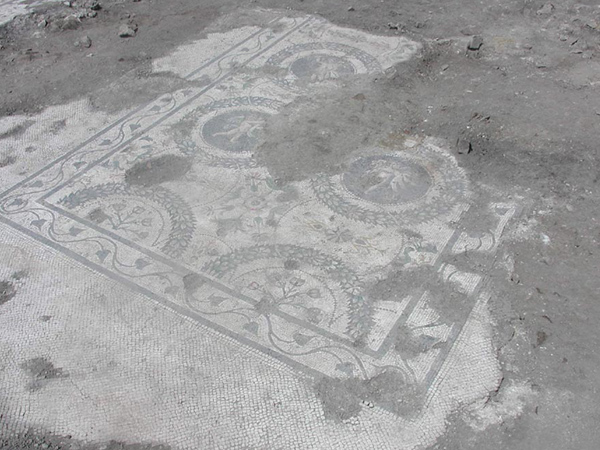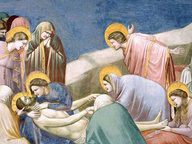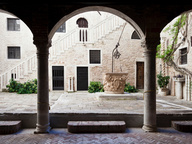The house of the dancing children (closed to the public)
Guida Aquileia

The House of the Dancing Children takes its name from the figurative subject of one of its most valuable mosaics.
The most recent phase of the house dates back to the 4th century, and to it belong the courtyard surrounded by arcades overlooked by the room with the mosaic of dancing cherubs, a large kitchen, the thermal area and other rooms intended for the owner's family. The landlord was most likely a wealthy character of the time.
To the east, the house overlooked a wide street, one of the hinges, covered with blocks of hard and resistant stone, flanked by arcades that provided passers-by with safe protection from the elements.
The most recent phase of the house dates back to the 4th century, and to it belong the courtyard surrounded by arcades overlooked by the room with the mosaic of dancing cherubs, a large kitchen, the thermal area and other rooms intended for the owner's family. The landlord was most likely a wealthy character of the time.
To the east, the house overlooked a wide street, one of the hinges, covered with blocks of hard and resistant stone, flanked by arcades that provided passers-by with safe protection from the elements.



